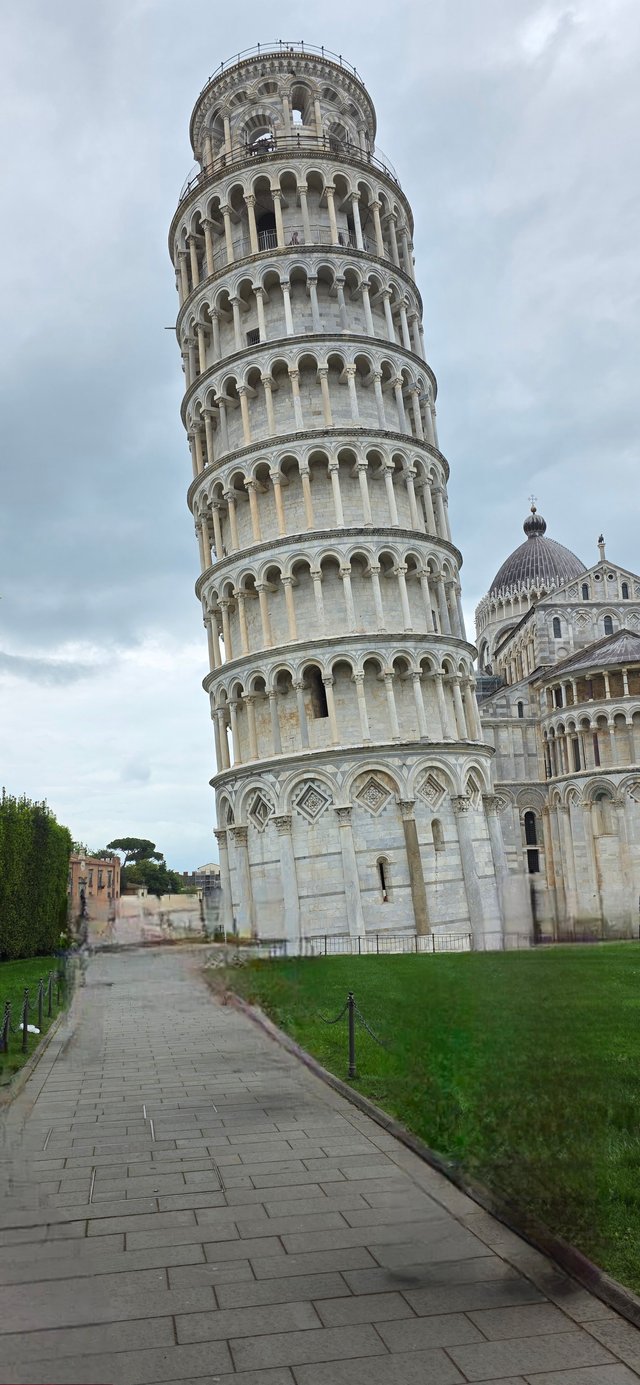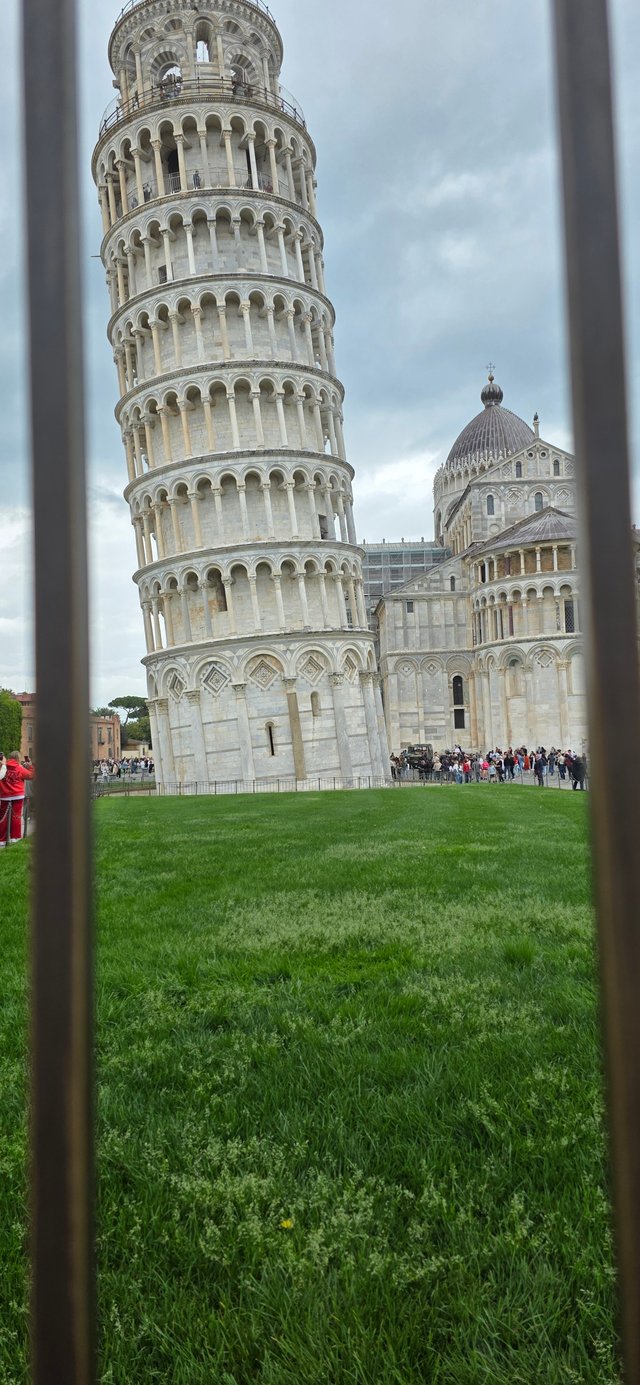The Eternity of a Fragile Beauty- The Pisa Tower
There's a blade of grass that has bent, a cloud that has become transparent, a breath that has grown lighter. Within the breath of an era, within the soul of a city, exists a creature of marble and dreams. An architectural entity, an imperfect and sublime sculpture that stands with a clumsy grace and a dignity steeped in melancholy. It is the Leaning Tower of Pisa, a marvel of white purity that defies gravity and common sense, inclining its head in a gesture of eternal, silent reverence.
It is not just a building; it is a living metaphor, an allegory of what we are. It is perfect imperfection, the fragility that transforms into strength, the mistake that becomes an identity. If its stones could speak, they would tell a millennia-old story woven with toil, with hope, with stumbles and with redemption. They would tell the tale of a tormented birth, of a restless adolescence, and of a knowing maturity, filled with a singular beauty.
Its genesis, so distant in time yet so close in our imagination, is an anthem to human patience. On August 9, 1173, in a sunny and vibrant summer air, the first, solemn block of marble was laid. It was an act of faith, an almost immeasurable ambition, a bold dream sculpted in stone. The city of Pisa, a powerful and proud maritime republic at the time, wanted a bell tower that would celebrate its greatness, a spiritual beacon that would dominate the Cathedral Square. It desired a work that was not only a testament to faith but also a declaration of wealth and power, a cry of magnificence that would echo beyond its walls.
In its first years, the building rose with disarming ease. Its white walls, its cylindrical shape, its slender columns, and its light arches ascended with the promise of geometric perfection. Three stories were completed, and the structure stood as an impeccable work. But destiny, like a divine caprice, had a bitter, though ultimately fortunate, irony in store. Beneath its foundations, the ground, a complex mixture of sand and clay, gave way, weak and inconsistent. That soil, so soft and so unreliable, was the weak point of an otherwise invincible beauty.
The lean, that slight tremor that became a progressive tilt, began to show itself. A birth defect, an insidious shadow that stretched over the ambitions of its builders. The construction halted for almost a century, stopped by wars, by economic crises, but perhaps most of all by a profound uncertainty. For ninety-five years, the Tower remained an unfulfilled promise, a wounded giant, a half-finished monolith. Its story, at that moment, seemed to be one of failure, of a broken dream.
But life, like history, is made of unexpected comebacks. In 1272, an architect named Giovanni di Simone resumed the work. With a boldness that bordered on madness, he tried to correct the slant, building the subsequent floors with an opposing curvature, as if to balance the weight, to reclaim the lost verticality. The effect was an even more accentuated, yet paradoxically stable, lean. The tower continued to grow, with its delicate columns and elegant loggias layered like the rings of a cosmic chain.
Each floor, a page of a millennia-old diary. The fifth, the sixth, the seventh. And finally, in 1372, after two centuries of uncertainty and struggle, the bell chamber was completed by Tommaso di Andrea Pisano. The seven bronze rings, the bells, were installed, and the bell tower could finally ring out, no longer just a monument, but a voice. A voice that carried with it the story of imperfection and a tenacious, stubborn will to exist.
For centuries, the Tower lived its life. The lean increased, year after year, millimeter by millimeter, in a slow and inexorable slide toward the ground. It was a fragile and defenseless entity, threatened by itself. And humanity, fascinated and worried by this tilted miracle, tried to save it. Every attempt, every effort, every project was an act of love, a challenge against inevitability.
They tried everything. They injected cement into the foundations, installed steel cables, excavated the earth, and tried to pull it up with winches and counterweights. For a time, its existence seemed to hang by a thin thread, like a work of art destined to collapse. But each time, with an almost supernatural grace, it resisted. Its imperfection was also its salvation. It was unique, and its uniqueness made it precious, unforgettable, inestimable.
In recent decades, thanks to meticulous and daring engineering work, the lean has been reduced and stabilized. The earth was extracted, one spoonful at a time, with infinite patience, until its core was strengthened. Today, the Tower no longer threatens to collapse, but the lean is still there, an indelible tattoo of its history.
When you look at it, under a cobalt sky or a gray and rainy atmosphere, you can't help but feel its soul. It is not just a monument, but a visual poem. It is the strength of the fragile, the beauty of the flawed. It is the demonstration that a mistake is not the end, but can be the beginning of something extraordinarily unique.
The Leaning Tower of Pisa, with its elegant arches and its tilted face, is a universal icon. It is the place where physics and poetry merge, where history and legend intertwine. It is the eternal reminder of how life, with all its stumbles and unexpected leans, can still rise, in a gesture of extraordinary, and deeply touching, beauty.
My property photos shooted by phonecam


